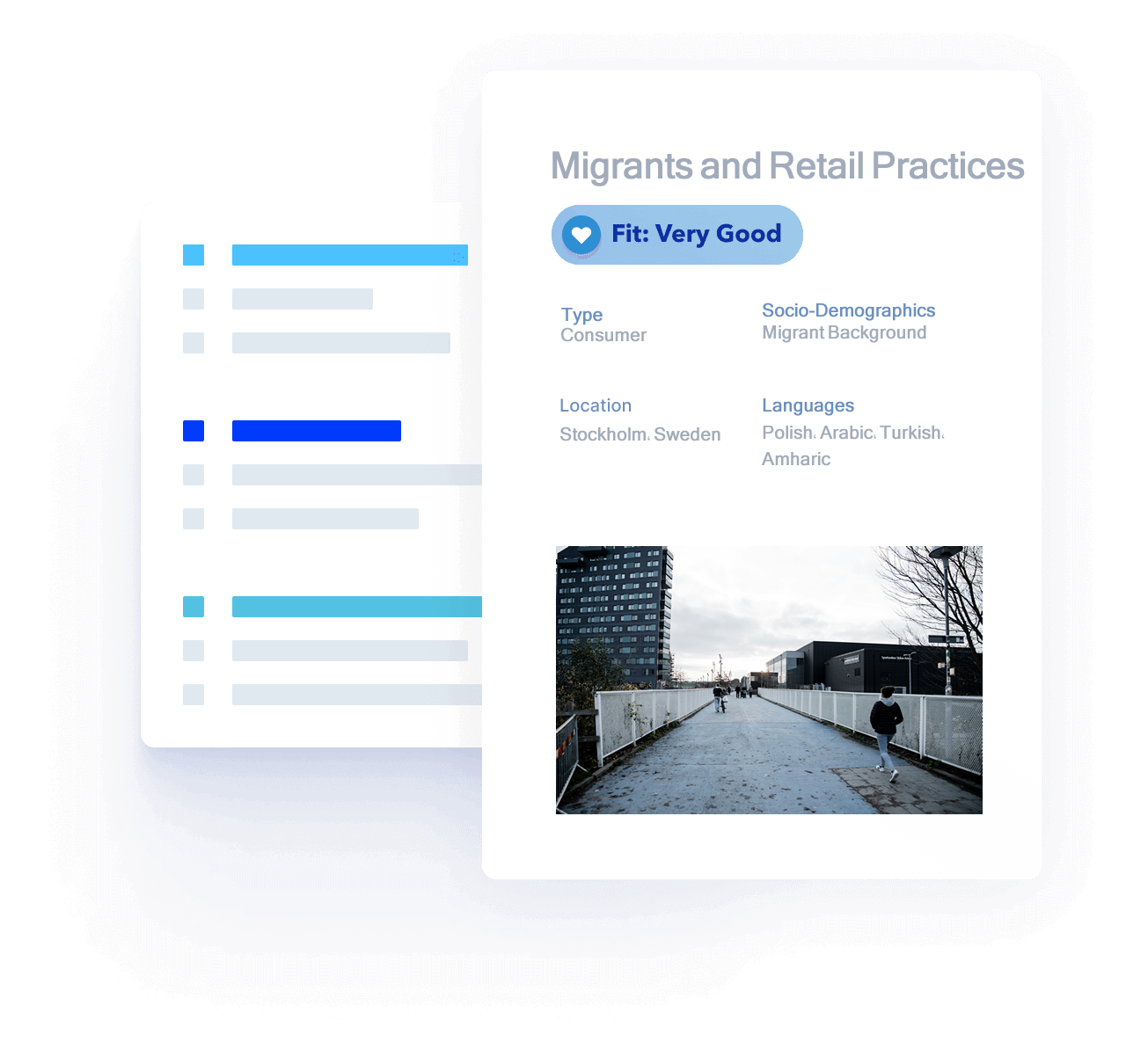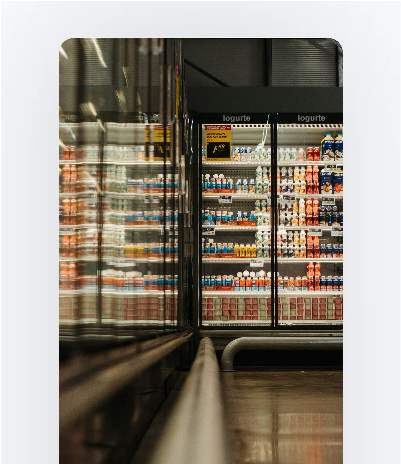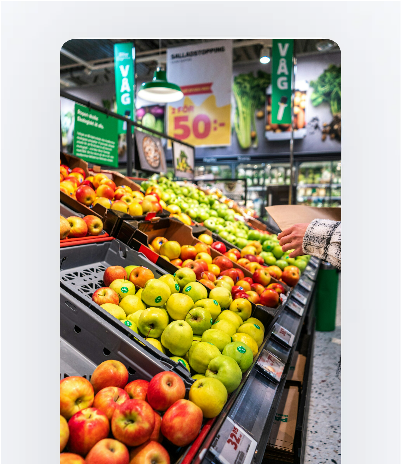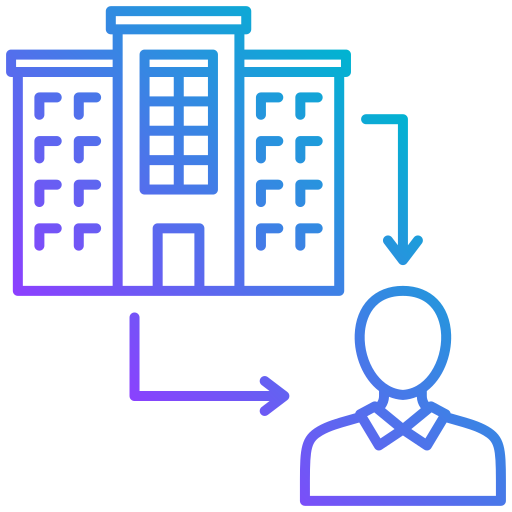Quantiative CATI interviews
Retail study among migrant populations In Sweden
Sampling hard-to-reach audiences in Sweden based on differenet migration background can be challenging as online access panels usually do not cover these.

Project Name
Retail study among migrant populations in Sweden
Projects Timeline
Q1 2024
Services
Sample Selection, Big Data Enhancement
Research Type
CATI Sample
Table of Contents
Key Metrics
CATI Interviews
Different Languages
Sample records per quarter
1
Project Background
A swedish retail company wanted to better understand how migrant population experience the shopping experience at the various grocery stores. Since a lot of panels underrepresent this group, the client wanted to look at other sampling options.
In-store shopping was also difficult due to possible language barrier.
2
Project Challenges
There were several challenges with this project: Based on an RDD sample it was necessary to link up the phone numbers to secondary sources such as messenger services, social media data and various other public data sources so that an onomastic approach could be used to determine the likely country of origin.
The client wanted to have a sample that yields data for Polish, Arabaic, Turkish and Ethiopian migrants.
An onomastic approach had to be used to derive the correct country of origin. Another challenge was the fact that the data had to be focussed on Stockholm only since it meant that it was necessary to append a location info to the sample as well.



3
Solution Provided
Sample Solutions provided a multi-channel recruitment approach that consisted of selecting the right target audience, crafting the right messaging to increase response rate as well as the incentive fullfillment.
Sample selection, outreach, ai supported messaging as well as the incentive fullfillment were all provided by our in-house technology.
4
Sampling Process
A 4 step sampling strategy was created based on our in-house mobile RDD database that provides access to phone numbers of every person with phone access in Sweden.
Afterwards the phone numbers were checked for working status and linked up to various secondary data sources. Important is that not just public data was accessed like the Swedish directories as they would give a picture of mainly second generation migrants. Messeneger and Social media data was used as well to ensure that even migrants from the last 3-5 years would be included in the CATI sample.
1
Define Sampling Strategy
Different sampling strategies were discussed on the best way to achieve a high incidence rate.
2
RDD sample Generation
An initial sample has been generated based on a true RDD sample covering all potential numbers thats exist within Sweden.
3
Big Data Matching
Every phone number generated was linked up to messenger services, public data and social media accounts to check for matches.
4
Onomastic Profiling
Based on the first and last name it was possible to provide likely incidence rates for migrants to be of a specific country of origin.
5
Sample Verification
All records were re-verified for working status and accurate linkage to ensure a high fieldwork efficiency.
5
Results and Outcomes
The client was able to collect quantitative data with the various quotas which allowed a better targeting of their retail strategy. Given that the approach has worked so well – this now runs as a quarterly tracker.
Respondent Recruitment
Recruitment of these very niche audiences is possible by leveraging Big Data applications that provide real authentic respondents which usually cannot be access through online panel providers.
Positive Feedback
Client was extremely satisfied with the diverse range of respondents and feedback provided.
Agile Workflow
From project confirmation to first respondents in - the turnaround time was only 3 working days showcasing the strength of the integrated sampling selection, onomastic profiling and big data matching.
Door-Opener
The project has been a door-open for various other similar projects in the business research space.
6
Conclusions
Even for projects which seem to have a very low incidence-rate. When applying a data-driven sampling approach which leverages Big Data and AI for solid sampling but using a traditional data collection mode (CATI).







